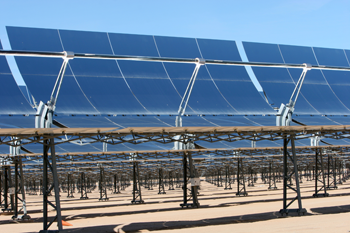Is nuclear energy the key to a sustainable future?
September 24, 2024

India, Sept. 24 — The world faces an urgent energy challenge: how to meet rising global demand while combating climate change. Fossil fuels, as the primary energy source, contribute heavily to carbon emissions, worsening global warming. As countries strive to decarbonise their economies, nuclear energy, once clouded by safety concerns and public skepticism, is making a comeback as a potential solution. However, the question remains: is nuclear energy truly safe and viable for today’s world? This article delves into the case for nuclear energy, the challenges it faces, and how technological advancements and policy changes can make it safer and more economically feasible.
Nuclear energy presents several compelling advantages in the quest for a sustainable future, particularly when it comes to its environmental impact. It is one of the most carbon-efficient energy sources available, producing almost zero carbon emissions during electricity generation, unlike fossil fuels such as coal, oil, and natural gas. This low-carbon footprint positions nuclear as an ideal candidate for countries aiming to meet their net-zero goals. A prime example is France, where over 70% of electricity is generated through nuclear power, contributing to one of the lowest per capita carbon footprints among developed nations. By relying less on fossil fuels, France has established itself as a leader in climate action while ensuring a stable energy supply. For comparison, coal produces 820 grams of CO2 per kilowatt-hour (kWh), natural gas emits 490 gCO2 per kWh, while nuclear energy generates only 12 gCO2 per kWh.
Another major advantage of nuclear energy is its reliability. Unlike renewable sources such as wind and solar, which are dependent on weather conditions and thus intermittent, nuclear energy provides a stable “baseload” of electricity. This consistency is crucial for maintaining balanced electrical grids, especially in countries increasing their reliance on renewables. Finland’s Olkiluoto 3 reactor is a notable example, offering a steady supply of electricity that reduces the country’s dependence on imported fossil fuels and enhances its energy security. In a world where energy security is a growing concern, nuclear energy offers a solution to reduce reliance on volatile international fossil fuel markets. The Russia-Ukraine war and the subsequent European energy crisis have underscored the geopolitical risks of heavy dependence on oil and gas imports, and nuclear energy can offer countries greater control over their energy production.
Despite its benefits, nuclear energy also faces significant challenges, starting with safety concerns. Incidents like Chernobyl (1986) and Fukushima (2011) have fueled public fear and skepticism about nuclear energy. However, it’s important to put these disasters into perspective. On a deaths-per-terawatt-hour (TWh) basis, nuclear energy is among the safest energy sources available. For instance, coal results in 24.62 deaths per TWh, while nuclear causes only 0.03 deaths per TWh. Modern reactor designs and safety protocols have drastically improved since these high-profile accidents, yet public perception remains cautious due to the lingering memories of these events.
Another pressing issue is nuclear waste management. Nuclear reactors produce long-term radioactive waste that remains hazardous for thousands of years, necessitating secure and stable storage solutions. Sweden’s Forsmark deep geological repository stands out as a successful model for safely storing radioactive materials underground. While this solution showcases how nuclear waste can be effectively managed, more widespread adoption of similar systems is necessary to address the global challenge.
Cost is another hurdle for the nuclear industry. Constructing nuclear power plants involves high upfront investments and is often subject to delays and cost overruns. This makes nuclear energy economically challenging, especially when compared to the decreasing costs of renewable energy technologies like solar and wind. The United Kingdom (UK)’s Hinkley Point C reactor, for example, has experienced significant cost overruns, with the final projected cost reaching £23 billion. Such financial difficulties make it hard for nuclear energy to compete in liberalised energy markets.
Technological innovations, however, are making nuclear energy safer and more viable. Small Modular Reactors (SMRs) are a promising development in the nuclear industry. These reactors are smaller, more affordable to construct, and quicker to deploy, incorporating enhanced safety features. SMRs offer a practical solution for smaller energy markets and regions with limited space. Another exciting prospect is fusion energy, which promises nearly limitless, clean energy with far fewer safety risks than current nuclear fission technologies. While still in development, projects like ITER in France suggest that fusion energy may not be far off, and both the UK and the United States have increased investments in this futuristic energy source.
In terms of safety improvements, modern reactors are designed with advanced features to prevent catastrophic failures. Generation IV reactors, for instance, are equipped with passive safety systems that automatically shut down the reactor in case of a malfunction, preventing meltdowns like those at Chernobyl or Fukushima. China’s HTR-PM reactor is a prime example of this new generation of reactors, designed with “meltdown-proof” technology due to its inherent safety features. These innovations are crucial in addressing public concerns and ensuring nuclear energy is seen as a safe option.
Public perception and policy support play an essential role in the future of nuclear energy. Although many still associate nuclear power with danger, there is a growing awareness of its potential to combat the climate crisis. To shift public opinion, governments and energy companies must lead educational campaigns that provide a balanced understanding of nuclear energy’s risks and rewards. Policy support is equally important. Governments need to extend subsidies and policy frameworks similar to those supporting renewable energy. The European Union’s recent decision to include nuclear energy in its green taxonomy, recognizing it as a sustainable investment, is a positive step that could attract more financial backing for nuclear projects.
Nuclear energy stands at a crossroads. Its potential to reduce carbon emissions and provide reliable, secure power is clear, but challenges related to safety, waste management, and high costs must be addressed to secure its place in the future energy mix. As technological advancements like Small Modular Reactors and passive safety systems gain traction, nuclear energy can become both safer and more economically feasible. Moving forward, nuclear energy will likely play a critical role in the transition to a low-carbon world, but it should complement rather than compete with renewable energy. With strategic investments, public support, and continued innovation, nuclear energy can help power a sustainable and secure future.
This article is authored by Ananya Raj Kakoti, scholar, international relations, Jawaharlal Nehru University, New Delhi. Published by HT Digital Content Services with permission from Hindustan Times. For any query with respect to this article or any other content requirement, please contact Editor at contentservices@htdigital.in
Search
RECENT PRESS RELEASES
Related Post


